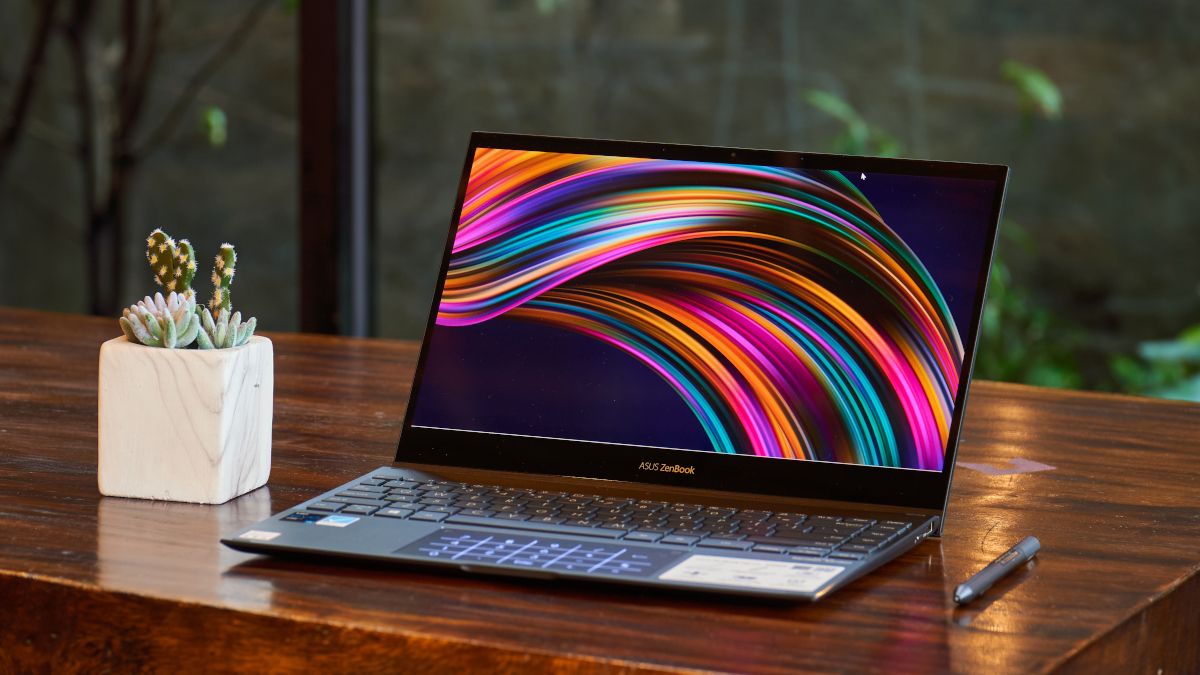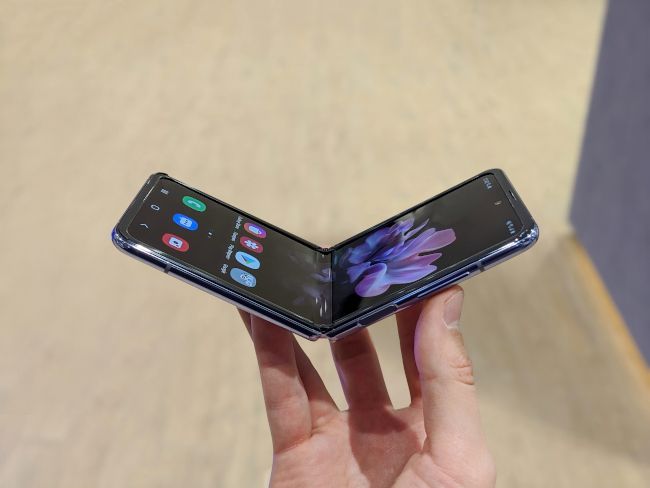Quick Links
OLED technology has finally found its way into laptop computers, but that doesn't mean it's automatically the best screen technology for your needs. Whether you should buy an OLED laptop depends strongly on your budget and your specific laptop needs.
What Is OLED?
OLED or Organic Light-emitting Diodes are a type of light-emitting electronic component used in OLED flat panel screens to reproduce images. Unlike LED LCD screens, OLEDs produce their own light, so they are notable for deep perfect blacks and rich, sharp images. LED LCDs work by shining an LED backlight through an LCD panel. This means that LED LCDs can't show true black, since the light is always shining through the panel even when a given pixel is turned off.
OLED generally presents an image that's superior in most of the ways that matter to viewers. That is, they offer high contrast ratios, brighter images, richer colors, and fast pixel response time.
OLEDs are gaining market share in the premium TV world, there are some OLED gaming monitors for computers on the market, and it's become the technology of choice in mid- to high-end smartphones and smartwatches. While there's a lot to absorb when it comes to OLED technology, one key OLED weakness at the top of most lists is burn-in. But how important is that to a laptop user?
OLED Burn-in and Laptops
OLED "burn-in" is permanent image retention of something the OLED has displayed as a static image over long periods of time. On OLED TVs common burn-in issues include channel logos or the interface elements of video games such as a health bar.
Using an OLED for a computer screen presents a special risk since there are so many static elements. Whether it's your wallpaper, a menu bar, or some other persistent image element. Indeed, Linus Sebastian of Linus Tech Tips fame tried to use an LG CX OLED as a computer screen and suffered nasty burn-in.
Conversely, Bob Wulf of Wulf Den fame left an OLED Switch (which presumably has a relatively cheap OLED panel) on for 1800 hours and counting without any burn-in whatsoever.
Early OLEDs were quite susceptible to burn-in, but OLED makers have learned many lessons, with anti-burn technologies built into the panels which cut down on the likelihood you'll suffer permanent image retention. We don't think OLED burn-in is a realistic reason to avoid OLED laptops, but you should take the time to read the warranty policy for a given laptop to make sure you know what's deemed acceptable when it comes to panel defects.
OLED Laptop Costs
OLED panels have been coming down in price rapidly over the years and you can now buy large format entry-level OLED TVs for prices that compete with high-end LED LCD units. Laptops and computer monitors with this screen technology are relatively rare, but on the laptop side of things, the selection is growing.
It's difficult to pinpoint exactly how much more an OLED laptop will cost all other things being equal. That's because other components or even the cost of a particular laptop design will throw in more variables.
Based on the laptops we've looked at on Amazon and other retailers, it appears you might pay between $100-$300 more for the OLED version of a laptop compared to one with very similar specifications but with an IPS LCD screen. It's further complicated by the fact that refresh rates and other types of monitor performance may differ as well.
There's no doubt that a price premium exists between LCD and OLED laptops, but there's no way to give a definitive answer, and often the extra money is only a small percentage of the laptop's overall cost.
Color Accuracy Is an Issue
If you work in a creative field such as photography, film, graphic design, or any visual arts, then color accuracy is a key feature you need in your monitor. When properly calibrated, your monitor should show consistent color compared to another calibrated monitor.
OLEDs seem to have a tendency towards oversaturation and lower color accuracy scored compared to LCD monitors. Again, this is a tough comparison to make because within each technology panel quality and performance vary. So we cannot say that all OLEDs have color accuracy weaknesses.
If color accuracy matters to you, pay attention to the color accuracy specifications of the OLED laptop you're considering. Make sure it accurately reproduces enough of the color gamut that you need it to.
OLEDs Are Thin and Light
Because an OLED doesn't require a panel and a backlight layer, the technology allows for a very thin display. It's even possible to make foldable and bendable displays, which we've mainly seen in phones using OLED screens.
Looking at ultrabooks such as Apple's MacBook line, it's clear that LCD screens are already mighty thin, but OLEDs make even thinner laptops possible. Whether we need them to be any thinner is another question. OLED panels are more fragile than LCD panels, which is why OLEDs are often covered with glass. Glass, of course, comes with its own tendency to shatter from impacts.
We haven't seen anything reported to indicate that OLED laptops are generally more fragile than LCD models. However, even if they are technically more fragile, laptops aren't used in a way that makes them likely to fall or suffer impacts. Also, it's worth noting that those thin LCD screens can break pretty easily too.
The Mini-LED Option
While OLED technology has been developing its reputation as the premium display technology, LCDs continue to evolve and improve. For example, Samsung's quantum dot technology in their cheekily-named "QLED" TVs offer eye-popping color and great black levels.
Then there's the advent of Mini-LED technology. With Mini LED screens, there are hundreds or thousands of individual backlight LEDs that can dim or switch off individually. This allows very good levels of deep black without any of the major OLED drawbacks. Mini-LED laptops are rare at the moment, but the technology does feature in some of the latest MacBooks and iPad Pros.
Shedding Light on OLED Laptops
OLED laptops look like a great choice for gamers who don't mind a 60Hz refresh rate (in most cases) and those who love to watch video content. It's perhaps not the best choice for users who have lots of long-term static content on-screen or who need color accuracy for professional work. The price difference isn't too wide between OLED and non-OLED laptops with similar specifications, so ultimately it depends on whether the strengths of OLED technology are more convincing than its weaknesses. Then again, laptops like the Dell XPS 13 OLED can be literally jaw-dropping in person.


